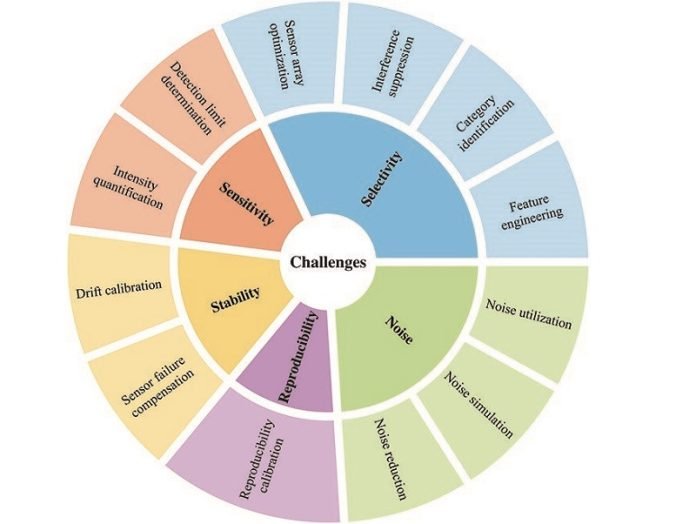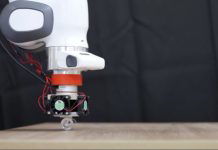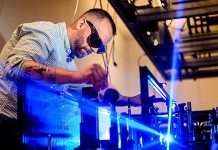
Have you ever wished that you could get a machine to “smell” something for you?
Well, that’s what electronic noses, or e-noses, are for!
They are systems that can mimic the sense of smell by combining chemical gas sensors, signal processing, and machine learning algorithms.
E-noses can be used for many purposes, such as checking the quality of food, monitoring air pollution, diagnosing diseases, and detecting explosives. But how do they work? Let’s find out!
When you smell something, tiny molecules float through the air and enter your nose. Similarly, an e-nose’s gas sensor can capture airborne molecules through an air intake system.
The sensor reacts to these molecules and changes in a way that can be measured by electronic signals. These signals are then converted into digital format so that computers can use algorithms to analyze and interpret the data.
The review that we are discussing talks about the challenges and opportunities in this field. The authors of the review have grouped the existing methods and algorithms according to a classification framework that highlights the challenges presented by the limitations of gas sensors.
Some of these limitations include limitations on selectivity, sensitivity, stability, reproducibility, and noise. These limitations can make it difficult for e-noses to distinguish between different odors and accurately detect odor concentration.
Despite significant progress in the last few decades, the large-scale deployment of e-noses in practical applications still has a long way to go. The authors of the review believe that ensuring the robustness of e-nose systems should be a top priority for future research and development.
They suggest that there are several crucial tasks that demand greater attention, including interference suppression and recognition, optimization of sensor arrays, detection of sensor drift and failure, noise reduction and utilization, and determining the limit of detection, among others.
Finally, e-noses are fascinating systems that can mimic the sense of smell.
While there are still some challenges to overcome, the potential uses of e-noses are endless, and the development of more robust systems could lead to significant advances in fields such as food safety, environmental monitoring, and healthcare.
Written by Intelligent Computing.
Source: Intelligent Computing.



